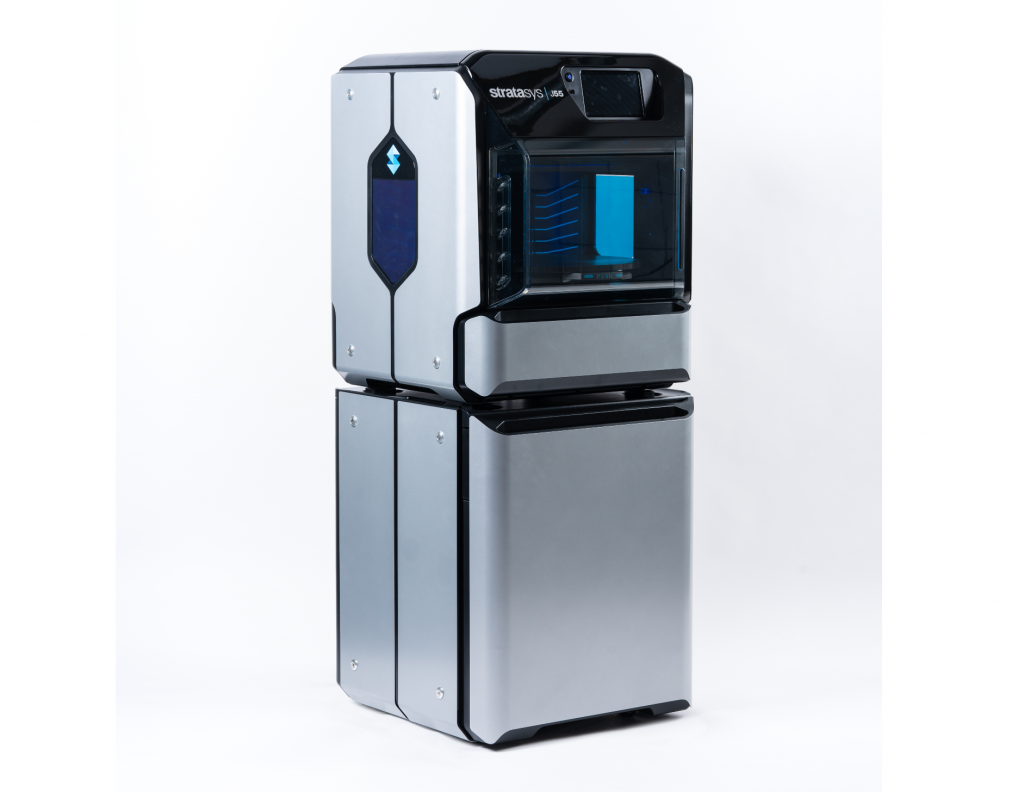Stratasys, a leading industrial 3D printer manufacturer, has announced a new partnership with software provider Adobe to streamline the 3D printing workflow for creatives.
As part of the partnership, artists and engineers using Stratasys’ PolyJet technology will be able to 3D print full-color polymer parts directly from Adobe’s Substance 3D Painter software. Until now, Substance users would’ve had to employ the use of additional third-party software to transform their digital 3D renderings into physical models, or risk the designs being printed without the desired color or texture.
“This collaboration has allowed us to see our designs for the very first time in the physical world – which is every artist’s and designer’s dream,” said Pierre Maheut, Head of Strategic Initiatives and Partnerships, 3D and Immersive – Substance for Adobe. “And to be honest, we have gotten a little bit emotional seeing our designs come to life and in a way that is so realistic.”

Adobe Substance 3D Painter
The Adobe Substance 3D suite is a collection of 3D design tools aimed at both professionals and hobbyists. Based on the original Substance set, which was acquired by Adobe back in 2019, the Substance 3D collection features four programs, together with an extensive library of readily available assets. Since their launch, the tools have been used to create renderings for everything from games, films, and fashion to architecture and product design.
Substance 3D Painter, one of the four offerings, is colloquially known as the “Photoshop of 3D” as it’s particularly well-suited to adding photorealistic textures to 3D models. Combined with 3D printing, the program can be used to create full-color product prototypes and package designs, which are prime applications of the Stratasys PolyJet platform.

Full-color prototyping with PolyJet
With the Substance-PolyJet interface now in place, artists, designers, and engineers will be able to more easily integrate 3D printed color, material, and finish (CMF) models into their product design processes. They’ll be able to perform rapid design iterations in Substance 3D Painter and see and feel the changes in the real world without any added time or cost, ultimately streamlining the development workflow with printers such as the J55 Prime and J850 Pro.
As an added bonus, customers that commission 3D printed parts will be able to touch and interact with their product prototypes in a manner that digital media just doesn’t permit. As a result, end products will ultimately be more in line with the original design intent, leading to more requirements being fulfilled.
“After seeing the amazing digital models created in Adobe Substance 3D, we challenged ourselves with being able to 3D print them, identically, in the real world, bringing them to life,” said Pat Carey, Senior Vice President of Strategic Growth for Stratasys. “We have not only accomplished our goal but have seen excitement from Adobe about what this means for their Substance users.”

Stratasys boasts an extensive partnership network that extends the use of PolyJet 3D printing technology far and wide. Earlier this summer, the company partnered with Germany-based venture builder nFrontier to become the first Founding Partner of nFrontier’s new Emerging Technologies Center (EmTeCe) in Berlin. The facility will feature high-tech equipment and infrastructure provided by partners, the first of which being Stratasys.
Elsewhere, the company partnered with engineering software developer nTopology to add a new Masking Fixture Module to their jointly-developed FDM Fixture Generator design automation tool for 3D printed jigs and fixtures. As the second module to be added to the platform, the Masking Fixture Module is focused on automating the design work required for 3D printed fixtures, eliminating the need for manual masking techniques.
Subscribe to the 3D Printing Industry newsletter for the latest news in additive manufacturing. You can also stay connected by following us on Twitter, liking us on Facebook, and tuning into the 3D Printing Industry YouTube Channel.
Looking for a career in additive manufacturing? Visit 3D Printing Jobs for a selection of roles in the industry.
Featured image shows parts 3D printed on Stratasys PolyJet printers. Photo via Stratasys.


